i have build this little code to grab the pkeys(numbers) from the string (string could be of 1 page also) and then display the unique pkeys row wise. for example if the string is "Failure: Cannot retrieve market data: [Historical correlation for instruments 48021088, 1029755
is older than 2M, Historical correlation for instruments 48021088, 1029755,5445454 is older than 2M, Error while loading Structured Product market data"
output should be: 48021088 1029755 5445454
but right now my output is like [4802108 1029755 2 544545]
Note : it should not take 2 as pkey from the string "2M" i.e 2 month
Also, whenever i copy a long string in this code, i have to put \ after the end of each line to make it run, is there something i can do as soon as i copy a string from outlook or any other source and paste in this code, it should automatically format it and insert \ by iteself.
import re
import numpy as np
import pandas as pd
regex = ('\d+')
match = re.findall(regex, 'Failure: Cannot retrieve market data: [Historical correlation for instruments 48021088, 1029755 \
is older than 2M, Historical correlation for instruments 48021088, 1029755 is older than 2M, Error while loading Structured Product market data \
Failure: Cannot retrieve market data: [Historical correlation for instruments 52598110, 35602558 is older than 2M, Historical correlation for instruments \
52598110, 35602558 is older than 2M, Historical correlation for instruments 52598110, 35602558 is older than 2M, Historical correlation for instruments 52598110, \
35602558 is older than 2M, Error while loading Structured Product market data \
Failure: Cannot retrieve market data: [Historical correlation for instruments 48021088, 1029755 is older than 2M, Historical correlation for instruments 48021088, 1029755 \
is older than 2M, Error while loading Structured Product market data \
Failure: Cannot retrieve market data: [Historical correlation for instruments 612292, 52598110 is older than 2M, Historical correlation for instruments 612292, 52598110 is \
older than 2M, Historical correlation for instruments 612292, 52598110 is older than 2M, Historical correlation for instruments 612292, 52598110 is older than 2M, \
Error while loading Structured Product market data \
Failure: Cannot retrieve market data: [Historical correlation for instruments 489459, 104322960 is older than 2M, Historical correlation for instruments 489459, \
104322960 is older than 2M, Historical correlation for instruments 489459, 104322960 is older than 2M, Historical correlation for instruments 489459, \
104322960 is older than 2M, Error while loading Structured Product market data')
res = list(map(int,match))
x = res
# print(str(x))
unique_numbers = list(set(x))
print(np.transpose(unique_numbers))
